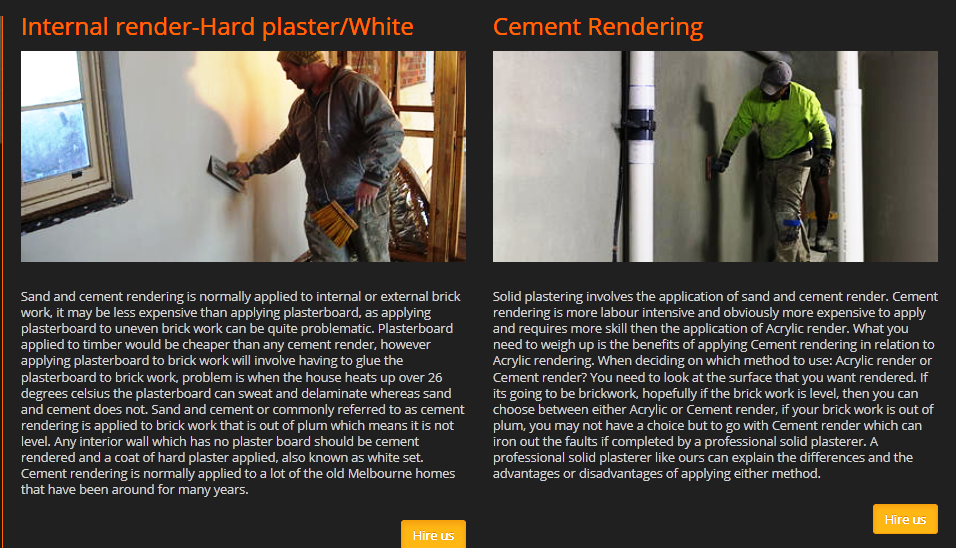
In construction and architecture, the finishing touches on a structure play a pivotal role in defining its aesthetic appeal and longevity. Solid plastering, brick rendering, retaining walls, and acrylic rendering are critical techniques in the construction industry to enhance buildings' visual appeal and structural integrity. This article will delve into each of these processes to understand their significance and application.
Solid Plastering:
Solid plastering, also known as traditional plastering, is an age-old technique that involves applying a thick layer of plaster directly onto a wall or ceiling. The primary purpose of solid plastering is to create a smooth and even surface. This technique not only enhances the structure's visual appeal but also provides a protective layer against weathering and external elements.
Solid plastering is versatile and can be applied to various surfaces, including brick, concrete, and metal. The process typically involves the application of a base coat followed by a finishing coat. The base coat, also known as the scratch coat, provides adhesion to the surface, while the finishing coat ensures a smooth and polished appearance. Solid plastering is often chosen for its durability and ability to withstand the test of time.
Brick Rendering: A layer of mortar or plaster
Brick rendering is a technique that involves covering the external surface of a brick wall with a layer of mortar or plaster. This process adds a coating of protection to the bricks and allows for creative design possibilities. Brick rendering can be done using various materials, including cement, lime, and acrylic-based renders.
One of the primary advantages of brick rendering is its ability to transform the look of a building. It allows architects and homeowners to choose from a wide range of finishes and textures, giving the exterior a modern or classic appearance based on design preferences. Additionally, brick rendering enhances weather resistance, protecting the underlying brickwork from moisture and other environmental factors.
Rendering Retaining Walls:
Retaining walls is crucial in supporting soil and preventing erosion, especially in landscapes with varying elevations. Rendering retaining walls involves applying a protective layer to these structures, enhancing their functionality and aesthetics. The rendering process for retaining walls is similar to other rendering techniques, involving the application of base and finishing coats.
Rendering retaining walls involves applying a protective layer to the structures.
The rendering of retaining walls improves their resistance to weathering and contributes to the overall landscape design. Homeowners and landscape architects can choose from various finishes, including textured or smooth surfaces, to complement the surrounding environment. The rendered texture acts as a barrier, preventing water penetration and minimizing soil movement's impact on the retaining wall's structural integrity.
Acrylic Render:
Acrylic render is a modern technique that utilizes acrylic polymers as a critical component. Unlike traditional renders that may include cement or lime, acrylic render offers enhanced flexibility and durability. This type of rendering is prevalent for its weather resistance and ability to withstand temperature fluctuations without cracking or peeling.
Acrylic rendering is applied similarly to traditional renders, but its composition provides added benefits. The acrylic polymers improve adhesion, making it suitable for various surfaces, including concrete, brick, and fiber cement. Additionally, acrylic rendering is available in multiple colors, allowing for creative expression in architectural design.
Conclusion:
In the world of construction and design, solid plastering, brick rendering, rendering retaining walls, and acrylic render stand as essential techniques that enhance the aesthetic appeal of structures and contribute to their longevity and resilience. Each method brings its unique set of advantages, providing architects and homeowners with the flexibility to choose the most suitable option based on the specific requirements of a project. As technology advances and new materials emerge, these techniques will likely continue to evolve, pushing the boundaries of what is possible in architectural finishes.
To know more about Acrylic render, you can visit S&E Construction and Maintenance.

No comments yet